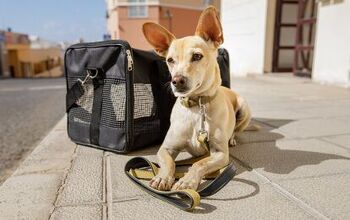Teach Your Dog to Love Coming to You

Not only is this frustrating for owners, but it can be dangerous if your dog won’t come to you when danger is present. Fortunately there are steps you can take to teach your dog that coming to you is actually the best part of his outing, not the end of the fun.
Why Do Dogs Have Selective Hearing?
The reason your dog doesn’t come to you is because he’s learned that it doesn’t pay. When he responds to your “come” cue in the park, it means you’re going to put on his leash and make him leave his friends behind. Can you blame him for blowing you off?
Related: How To Teach Your Dog The Recall Command
The idea that your dog should listen to you simply because he’s a dog and you’re the “master” is completely outdated. In many ways, dogs and other mammals aren’t so different from humans. When a dog’s action is followed by a positive outcome, he is motivated to do it again; likewise, when his action leads to an unpleasant outcome, he’s in no hurry to repeat that action.
Humans abide by similar principles. This is why many people delay dentist appointments for months or years. They remember that the last time they made an appointment, they were “punished” with novocaine and a drill. What’s the key to getting your dog to do something he doesn’t really want to do? Make the consequence pleasant. If the dentist gave you a $100 gift card every time you went there, you’d probably be getting professional cleanings every month, and the drilling would sound like music to you.
Related: 6 Tips On Teaching Your Puppy To Come When Called
Recipe for Recall
In the case of recall (meaning “come”), the goal is to make the outcome enjoyable for your dog when he returns to you. What does your dog really love? Treats? Toys? Balls? Choose something he adores as a reward for coming to you. Bring that item to the park with you, and practice this sequence:
- While your dog is on leash in a low-distraction part of the park, cheerfully say “come!” and run a few steps away from your dog. This encourages him to chase you. Reward him when he comes to you by giving a treat or tossing him his ball. Repeat this a few times during the walk, as a surprise little on-leash game.
- Get a long line or 20-foot rope. Walk your dog in a low-distraction part of the park. When he’s towards the end of his line, call “come” and run a few steps away from him. Reward and cheer when he comes to you. Then, send him back to sniffing or romping. Repeat this several times during the walk when he doesn’t expect it.
- Take him to an off-leash area that is relatively quiet, or an empty dog park. Practice the same sequence as above, with your dog off leash.
- At this point, your dog should love coming to you. You can practice recall in increasingly distracting areas, working your way up to a dog park full of dogs.
- Once at the dog park, practice a few recalls during downtime or light playtime, and then send him back to playing. When it’s time to finally go home, call your dog, but give him a few extra rewards as you put on the leash and depart. (If you reward with a toy, play a short game with him after you’ve clipped the leash.)
By making recall part of the fun, rather than the end of it, your dog will happily come to you when called.

Kate Naito, CPDT-KA, is a dog trainer at Doggie Academy in Brooklyn, NY, and author of the training book, "BKLN Manners." She draws upon her experience as an educator and dog trainer to apply positive training techniques to a challenging urban environment. Kate is a rescue advocate drawn to special-needs dogs and currently has two Chihuahua mixes, Batman and Beans.
More by Kate Naito























